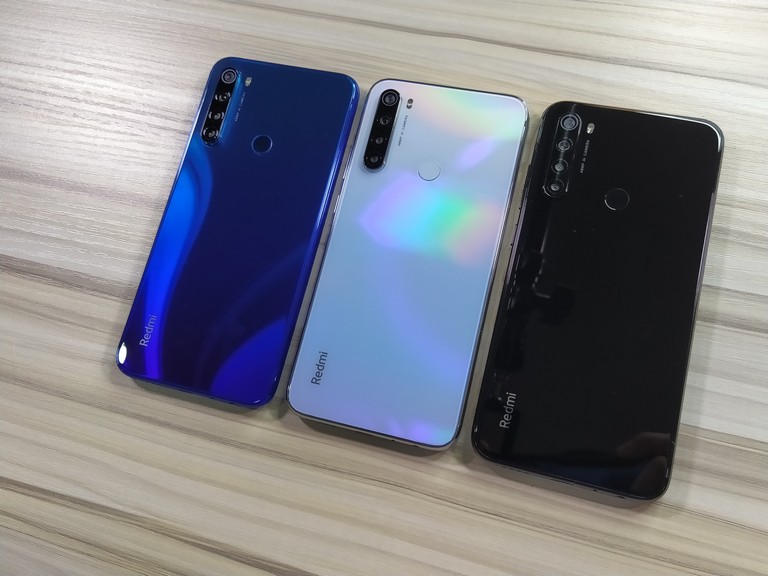After the very successful launch of the Redmi Note 7, Xiaomi capitalized on its popularity and launched the Redmi Note 8 in just 7 months. With 40 Million units sold worldwide, the accomplishment of the Redmi Note 7 is definitely unparalleled. Redmi of course would love to repeat the history that they have set for the Note series. But we will analyze this phone and see if it is worth the upgrade from the Redmi Note 7 or not.
Redmi Note 8 Specs Sheet
- 6.3-inch FHD+ IPS LCD display @ 2340 x 1080 pixels, 409ppi, 81.7% Screen to Body Ratio, 19.5:9 Ratio
- Corning Gorilla Glass 5
- 2.0GHz Snapdragon 665 Octa-core CPU Qualcomm SDM660 (11nm) [4×2.0 GHz Kryo 260 Gold & 4×1.8 GHz Kryo 260 Silver]
- Adreno 610 GPU
- 4GB / 6GB RAM
- 64GB / 128GB Internal storage
- Expandable via microSD, up to 256GB (Dedicated Slot)
- 48MP 0.8μm Rear Camera, f/1.8 Aperture, PDAF, face recognition, HDR, AI Portrait Mode, Night Scene
- 8MP Wide Angle Lens, 1.12μm, FOV 120°, f/2.2 aperture
- 2MP Macro Lens, 1.75μm, f/2.4 aperture, AF
- 2MP Depth Sensor, 1.75μm, f/2.4 aperture
- 13MP front-facing camera, 13MP, 1.12μm, f/2.0 aperture
- Dual-SIM (Nano + Nano + Micro SD)
- 4G LTE, 4G+, VoLTE
- Wi-Fi 802.11 a/b/g/n/ac, 2.4G/5G Wi-Fi, Wi-Fi Display
- Bluetooth 5.0
- GPS w/ A-GPS, GLONASS, Beidou Positioning
- Fingerprint scanner, Face Unlocking Feature, Super Linear Speaker
- USB-C Port
- 4000 mAh battery, 18W Fast Charge Support
- Android 9 on MIUI 10
- 158.3mm x 75.3mm x 8.35mm
- 190grams
- Available in Black, White and Blue
Unboxing
Design
The Redmi Note 8 looks very familiar as soon as I opened the box, it looks exactly like the Redmi Note 7, with just a minor tweak in the design category. One good thing about the design is that the back is flat, it means what when you lie it flat on the table, it will not slide that much since its flat. The only new design I saw is the REDMI logo on the chin of the front bezel. Other than that, its exactly a photocopy of the Redmi Note 7.
Lucky for us we were able to score all 3 colors, therefore its my tradition to give you nothing but the best review I can give.
Snapdragon 665
One of the more efficient processor from Qualcomm, the SD 665 is one battery efficient and powerful processor. I did place the Redmi Note 8 under multitasking mode and it simply performed without any hitch, of course coupled with a 6GB RAM it shouldnt be a problem at all. Trying some games like NBA 2k20 and PUBG, both ran without any slowing down during game play, thanks to the powerful SD 665. Tho you cannot put it into max settings, but you can use GFX Tool to twitch, but beware of over heating.
Antutu awarded it with 170k points, which is a significant improvement over the SD 660 which scored 140k points on the Redmi Note 7.
More photos on the Redmi Note 8.
Connectivity
The Redmi Note 8 supports 9 different LTE bands, it’s easy to switch to LTE network inside the settings and whats good on this unit now is that you can also set 2nd Sim on LTE as well since it now deploys the Dual 4G technology (but 5G is still not available on this unit) on this unit but it should consume battery faster. We have experienced no problem surfing using LTE or 3G in our home country in the Philippines as well as dual standby mode is working seamlessly. Wireless connectivity via Wi-Fi a/b/g/n/ac is also smooth and it also supports Wi-Fi Direct. Wireless screen mirroring is also available via the Miracast protocol as we were able to cast it to the Mi TV 4C, tethering data is also working perfectly. Bluetooth 5.0, GPS, and GLONASS are all present and working pretty good. We also have a smooth navigation using Wazw while cruisin in the city using the Redmi Note 8.
Detailed Network Band Supported on Redmi Note 8:
4G: LTE FDD: B1/3/5/8
LTE TDD: B34/38/39/40/41 (2555-2675MHz)
Audio and Video
MP4 | M4V | MKV | XVID | WAV | AAC | MP3 | AMR |
Supports next-generation video codec technology, HEVC, H.264, MPEG4, VC-1 and other video formats
Camera
Everytime we get our hands on a new phone, its always boils down to the camera. Especially this unit that sported a 48MP makes me want to take it out immediately and test the camera out of the box. Now with 4 cameras at the back, I believe this one should be a performer. Check out my shots below.
Sample Shots
Sample Selfie
Sample Video
Battery Performance
We were able to achieve a good battery rating for this unit since its a Snapdragon (Qualcomm is known for their battery efficiency), we lasted a day on normal usage without hitting the charging port or power bank. PC Mark Battery Stress Test rated it at 14 hours 35 minute SOT, which is 1 hour more than the Redmi Note 7 we tested. Now we have tested the charging time, we were able to charge from 17% to 100% within 2 hours as we monitored it closely while charging using the Battery Bot Pro. This was quite longer than I have expected.
Conclusion
After playing this unit for a few days, I was really quite impressed with the Redmi Note 8, tho there is not much changes on this phone plus the MIUI on this one is a little buggy as the screen seems to freeze when changing between panels. We need to lower the animation to fix it, in short the optimization has yet to receive an update for the fix. If you are after the camera with a budget, this one definitely is the one for you. But if you are after gaming experience and previously owned the Redmi Note 7, I dont really recommend this one, I’d rather recommend the Redmi Note 8 Pro as a game changer.

